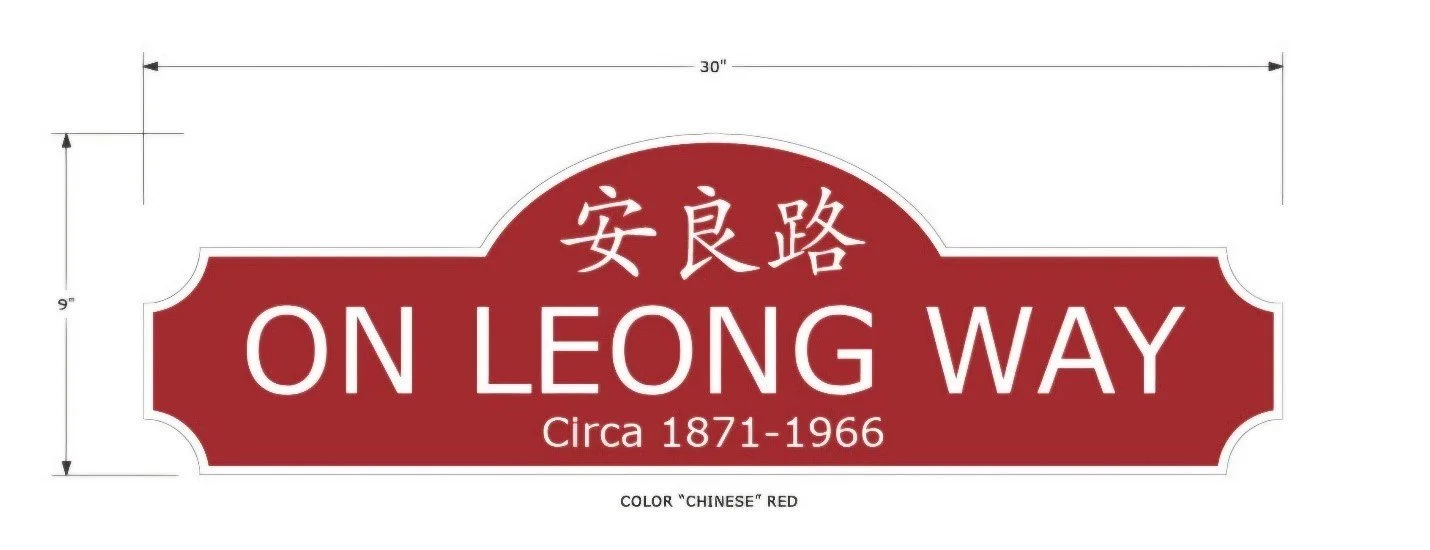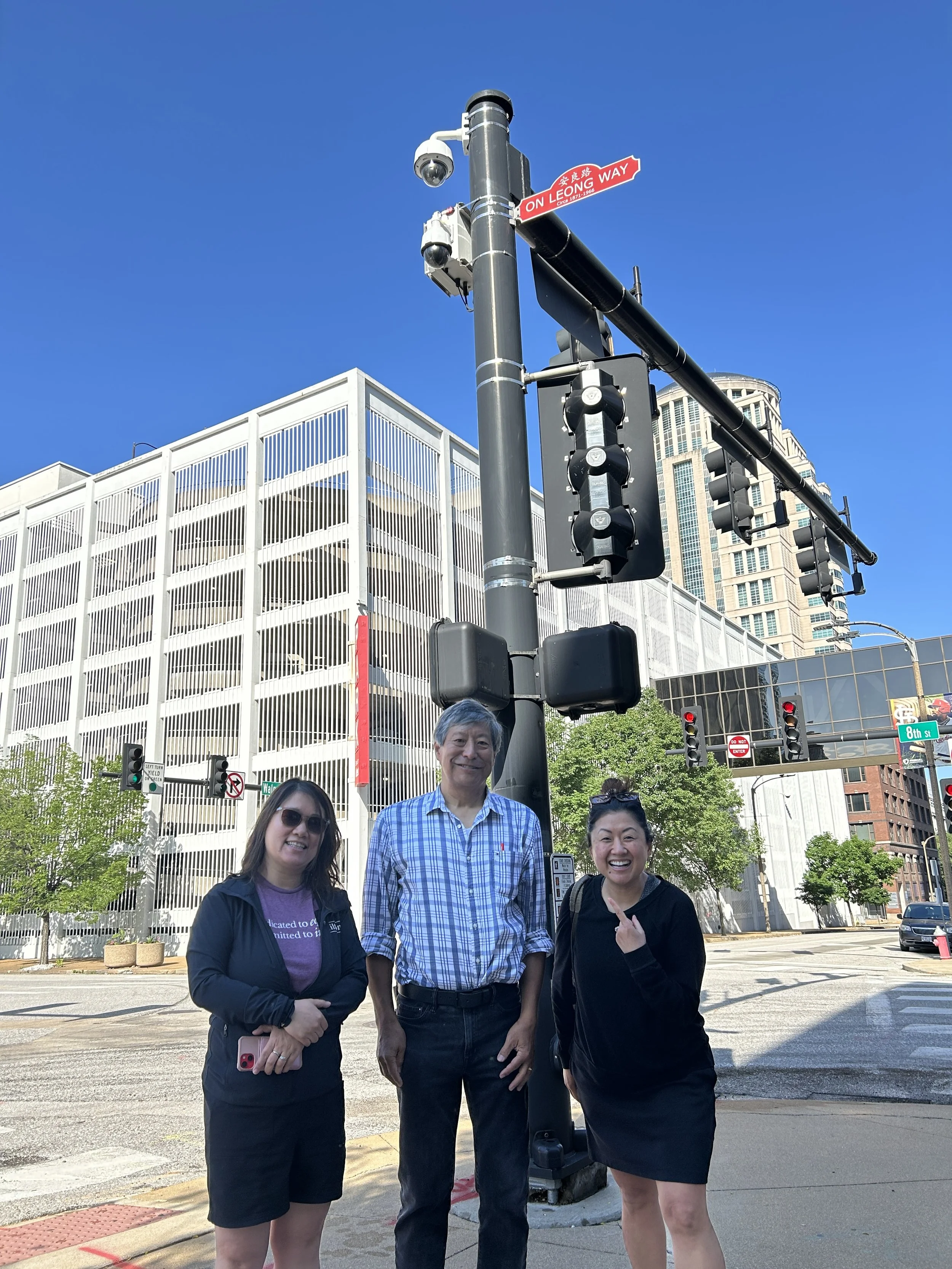A DAY TO REMEMBER - ON LEONG WAY
A Year Ago, I wrote a Blog, St. Louis Had a Chinatown? for the Missouri Historical Society Chinese American Collecting Initiative (now called the Chinese American History Initiative), mainly because I was tired of hearing this question and having to explain it over and over again. Also, people and media keep recycling the same information, not recognizing that some historical “facts” have now been updated or newly told based on new discoveries.
After all, Chinatown existed for nearly a century. So, why don’t people know or remember? Isn’t a century worth of history relevant?
This bothersome question resonated with me so much that I took the initiative to create a presentation, Lost Chinatown and Insights to St. Louis Chinese American History, to educate the public. This presentation has been received quite well, having recently presented it for the St. Louis Public Library as part of their AAPI Heritage Month series. Thank you SLPL for inviting me!
At the time of my Blog, Board Bill 32 had been submitted to the City of St. Louis Board of Alderman for approval. BB32 was a proposal, sponsored by then Alderwoman, Cara Spencer (now Mayor of STL) to honor St. Louis’ Lost Chinatown with an Honorary Street Naming.
The story of pursuing this recognition is captured here in this special news feature by Michelle Li, https://www.ksdk.com/article/news/local/effort-honor-century-old-chinatown-st-louis-moves-forward/63-73fb51a6-f186-42f1-8d00-84209b0f9dd2
Well, the Bill did pass unanimously, on June 7, 2024 and is now officially in the City of St. Louis records as Ordinance 71863. Once Lost (and forgotten) Chinatown now has a physical marker to make people aware (and remember?). Following is the Ordinance, which I co-authored with Michelle Li (KSDK news anchor, Very Asian Foundation) which provides some insights into the U.S and local history that impacted the these Chinese and those around the country.
The honorary street sign is called On Leong Way (direct translation, Peaceful, Benevolent Way), but it is also a tribute to the namesake On Leong Chinese Merchanats & Laborer’s Association (abbreviated, On Leong Association) the business organization that represented merchants, but also the Chinese community in many other ways (business representation, translations, interfacing with the law and legal system, immigration, even finding a place for burial).
The Association, dating back to 1906, was one of many throughout the U.S. with the headquarters located in New York City. St. Louis was home to many conventions. The history of the On Leong is thoroughly covered in Dr. Huping Ling’s paper, Governing “Hop Alley”: On Leong Chinese Merchants and Laborers Association, 1906-1966.
East side of So. Eighth Street between Market and Walnut (currently the Spire Building). News highlight, 1938.
1871 is a revised date that the MHS History Initiative determined was more accurate based on census data and news coverage.
So, on this appropriately beautiful, sunny Friday, May 30, 2025 the signs were quietly installed on South Eighth Street, between Market and Walnut Streets, the former main street of our Lost Chinatown.
Corner of South Eighth Street and Walnut Street
Corner of South Eighth Street and Market Street
Why quietly?
We had originally planned for a joyous celebration on Saturday, May 31st, the last day of Asian American and Pacific Islander Heritage Month, with speeches, a lion dance, firecrackers and food. But instead, the signs went up, unannounced, but known to only a few of us who worked hard to get this achieved.
Dr. Min Liu, the Accidental Historian, Michelle Li (missing from photo, but not in spirit, Danny Poon, who couldn’t play hooky)
How can we not celebrate this historic milestone?
Well, you see, only two weeks ago, the City of St. Louis was devasted by an indiscriminate tornado, sending the city scrambling into triage mode, leaving a mountain of challenges ahead (and literally mountains of debris). It was not the right time to celebrate.
We thank the City of St. Louis Streets (Signage) Department and their hard-working civil servants who met us early in the morning to put up the signs before resuming their daunting tasks in assisting in the tornado damaged areas.
It has been nearly 60 years since we lost this Chinese neighborhood, but alas, it is already gone. We think the spirits of this neighborhood would understand and find peace in knowing that the celebration was postponed in order to direct the attention to help others.
It is more important that attention be focused on those neighborhoods (and people) that have been hit, that attention be on their immediate and long-range recovery, before they too are lost, with their many generations of history. The city (and our region) should not allow more historic neighborhoods to disappear and those stories within.
So, until the time is deemed appropriate for a celebration, the signs can simply be discovered and perhaps perk some curiosity to the passerby who may look up and notice the Chinese characters, then maybe surmises that St. Louis must have had a Chinatown around here.
Indeed, we did and now you will know.
So, let’s not keep asking if St. Louis had a Chinatown. We have marked its location. Rather, now ask the questions about what was this neighborhood like and who were those people that came before us, as early as 1857.
A Nine PBS feature will be forthcoming on June 23, 2025 at 7pm, on Living St.Louis, their award-winning magazine-style series.
The Missouri Historical Society Chinese American History Initiative, with its small core team of volunteer researchers, is aiming to elevate this history and other insights to the Chinese Americans of St. Louis. The Team who worked on the Honorary Sign Project were led by Michelle Li and Peter Tao, with Key support from Danny Poon, Dr. Min Liu, Missouri Historical Society’s Christopher Gordon, Dr. Susan Brownell and Professor Ulug Kuzouglu.
Visit, https://mohistory.org/collecting-initiatives, to learn more or share your history of our Lost Chinatown.
Some shout outs. The fabrication of the signs were funded by Ed and Jo Ann Shew and the Very Asian Foundation. Sign fabrication by Engraphix Architectural Signage, who patiently worked with us on getting it right.
We do hope to one day install a more informative Historical Marker on the site.
Hint, hint for those who would like to fund.









